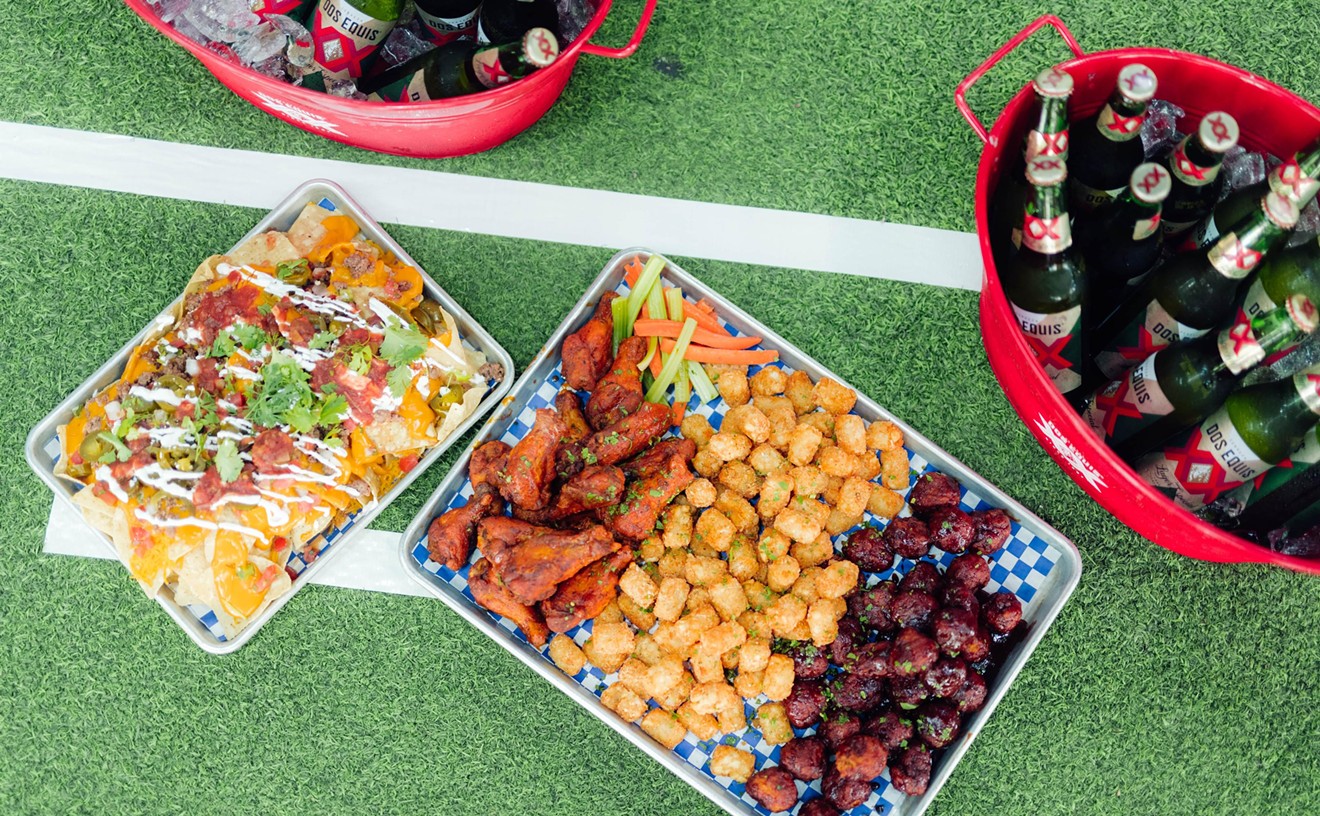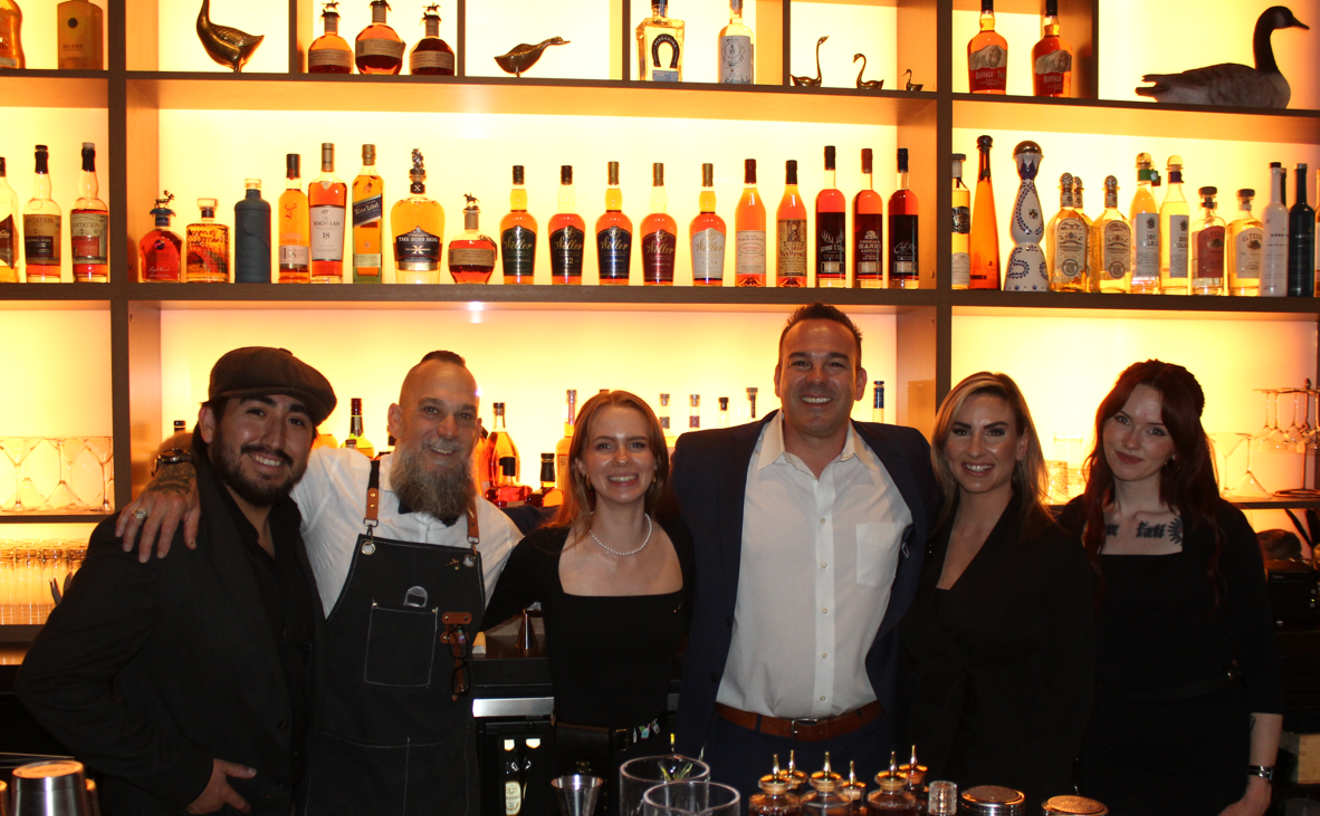If you've ever been inclined to dismiss rum as a legitimate spirit because of slushy vats of hot pink strawberry daiquiris, flaming tiki drinks or frat boys chugging Bacardi and Coke, hang on one little minute. Dwayne Allen, who co-owns The Breadfruit and Rum Bar with his partner Danielle Leoni, is just the guy to give you a much-needed attitude adjustment. His father's family has been growing sugar cane in Jamaica's St. Elizabeth Parrish and selling it to prestigious rum producer Appleton Estate for generations. "Rum is in my blood," he says only half-jokingly.
See also: -- The 11 Best Things I Drank in 2012
At Rum Bar, Allen offers 137 different bottles of rum, not one of them labeled Bacardi or Captain Morgan. So listen up because he makes a pretty strong case for rum being as sophisticated as it is fun.
The first thing Allen wants me to know is that rum is as American as Apple computers. Although the spirit was probably first distilled on the sugarcane plantations of the Caribbean in the 1600's (Barbados is often considered its place of origin), the drink's popularity soon spread to the North American Colonies. Our first distillery was established on Staten Island in 1664 and rum-making quickly became New England's largest and most profitable industry. When the Sugar Act of 1764 (a tax which pre-dated England's Tea Act by nine years) threatened to cut into the profits of the Triangular Trade (an exchange of molasses, rum and slaves), American colonists started thinking long and hard about revolution.
All rums fall into one of two umbrella categories: rhum industriel (any rum made from sugarcane byproducts, usually molasses) and rhum agricole (any rum made from the juice of pressed sugar cane). Most rums are made from molasses because it's less expensive.
Agricoles are treated the same way as Cognac, receiving AOC certification. They're produced in former French colonies such as Martinique and Guadeloupe.
Other Rum Classifications:
White -- Clear, light-bodied and subtle. The rum to use for a classic daiquiri or mojito or a fruity cocktail because the rum won't overpower the other ingredients. Think Mount Gay Eclipse, Cruzan Light Aged and Flor de Caña 4 Year Extra Dry.
Golden, Amber -- Smooth, medium-bodied but with more complexity. Most have spent some time (maybe several years) aging in oak. Still good for mixing in cocktails and they add a layer of depth. Think Smith & Cross, Appleton VX and El Dorado 12 Year.
Dark -- Rich, full-bodied, caramel-dominated rums. These are sipping rums, offering up flavors of chocolate, coffee, tobacco and nuts. Think Zaya 12 year, Appleton Estate 12, Zacapa 15 or 23 Year.
Black -- Even darker, richer and more syrupy with a strong molasses flavor. This rum is used for baking and making candy. It's also a natural with lime and ginger beer (ever tried a Dark & Stormy?) Think Gosling's Black Seal or Cruzan Black Strap.
Spiced -- These may be white, golden or dark rums, infused with natural (or not-so-natural) spices, caramel or artificial fruit flavors. They tend to be sweeter. Allen isn't much on these, but if you must, think Cruzan 9 Spice or Sailor Jerry.
Overproof -- Use for floats on tropical cocktails (they flame because of the high alcohol content), overproof rums are usually 60% (or more) alcohol by volume, which is to say, 120 (or more) proof. Try Wray & Nephew. Better than Bacardi 151.
And here are a few rums I sampled:
Appleton Estate 12 -- citrus notes as well as hints of walnuts, cinnamon, bacon and butter. It's a great example of a fine Jamaican rum and should be drunk neat or with a drop of water to open it up.
Dos Maderas PX ( 5 + 5) -- Aged five years in the Caribbean, then sent to Spain to age five more years in sherry casks, this stuff is amazing. Rich flavors of caramel, honey, vanilla, raisins, figs and prunes. Ultra-smooth. LOVE this.
Homere Clement -- From Martinique, this small-batch rhum agricole is aged in Cognac barrels and exudes a Cognac-like quality. Nutty, buttery, oaky -- a little like whiskey-wine.
What I Did Not Try:
Appleton 50, a one-time, special-release rum commemorating Jamaica's 50th year of independence. In 1962, Appleton set aside a few choice barrels already in the aging process, releasing 800 bottles in 2012. Most went to spirit collectors (Prince William received one), so this may be the only commercially available bottle in the world. It's the one in the pretty black box. You can have a pour for $2500.










